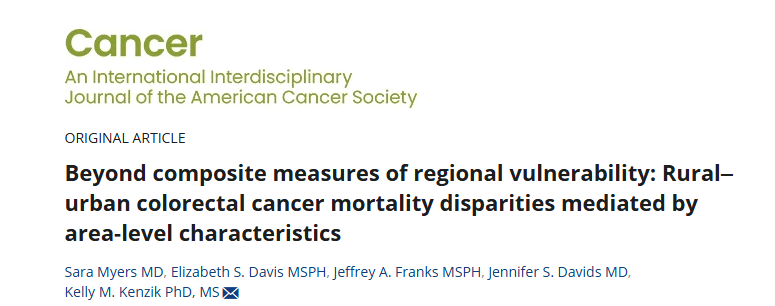American Cancer Society Journals shared a post on LinkedIn:
“Rural communities face nearly 12% higher colorectal cancer mortality than urban areas, but the reasons why are complex.
A new study in CANCER uses two decades of U.S. county-level data to uncover the social determinants of health that drive this gap. Factors such as poverty, unemployment, lower educational attainment, household composition, and limited access to a vehicle all contributed to elevated mortality rates, with rural counties disproportionately impacted.
Senior author and CANCER Editorial Advisory Board member Kelly Kenzik, of Brigham and Women’s Hospital, emphasizes the need for tailored interventions.
‘Our findings show that while socioeconomic vulnerability drives much of the disparity in colorectal cancer mortality, the rural–urban gap is shaped by a broader set of contextual factors. . .actionable progress will depend on domain-specific measures that identify concrete barriers and facilitators, guiding resource allocation and policy tailored to local needs.’
These insights underscore the importance of community-level strategies to reduce disparities and improve outcomes across diverse communities.”
Title: Beyond composite measures of regional vulnerability: Rural–urban colorectal cancer mortality disparities mediated by area-level characteristics
Authors: Sara Myers, Elizabeth S. Davis, Jeffrey A. Franks, Jennifer S. Davids, Kelly M. Kenzik
Read the Full Article in CANCER.

More from American Cancer Society Journals on OncoDaily.
